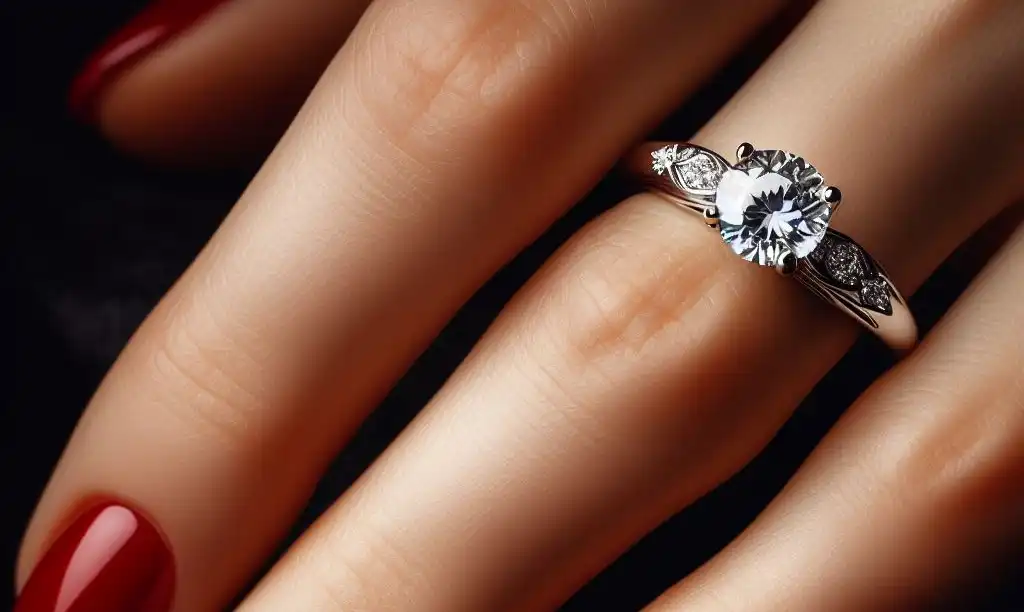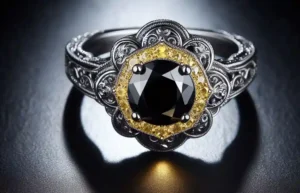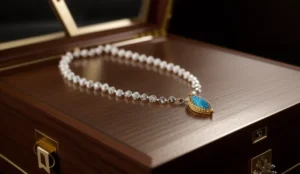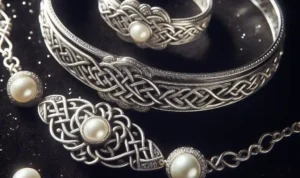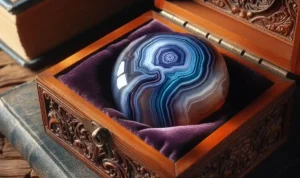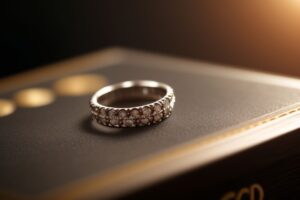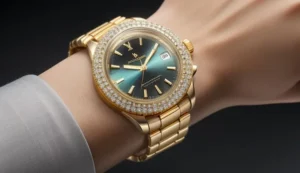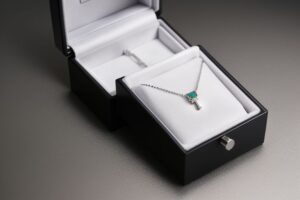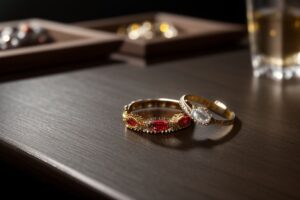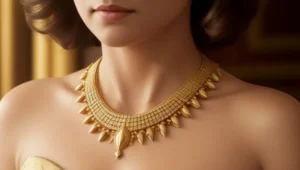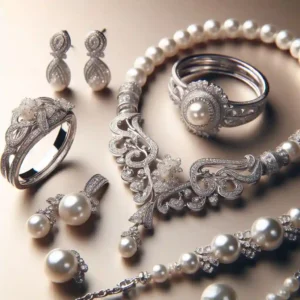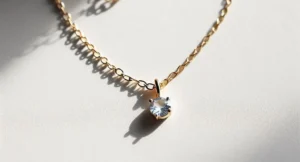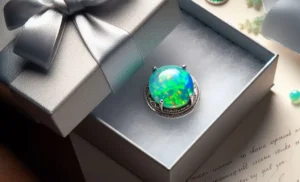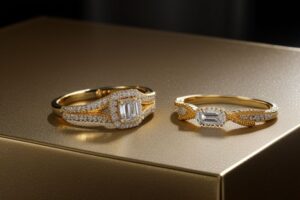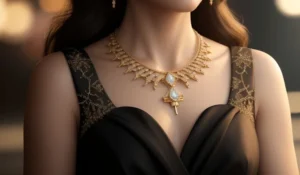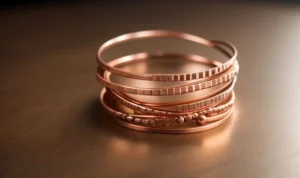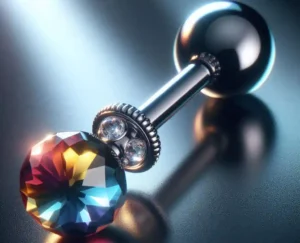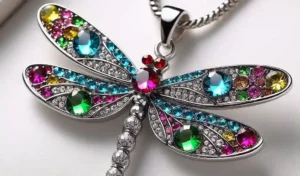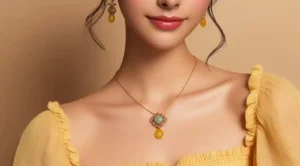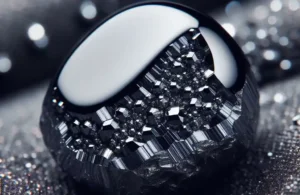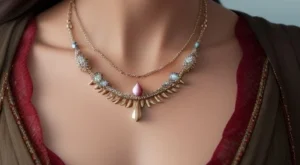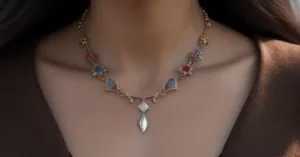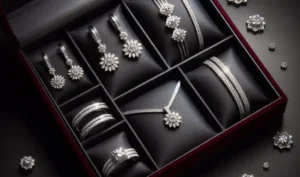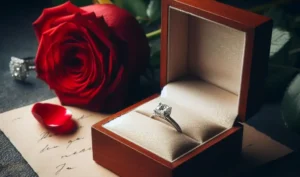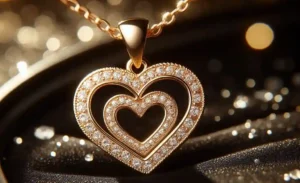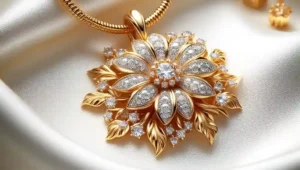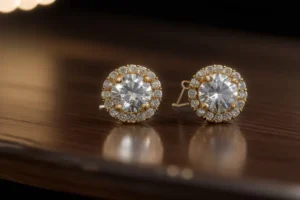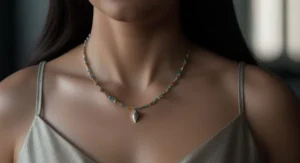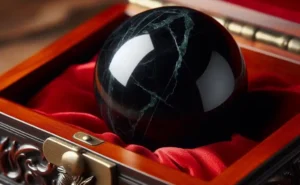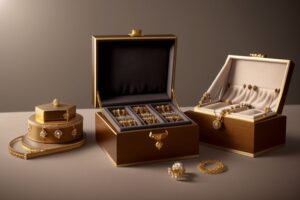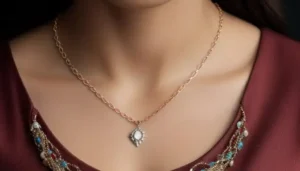What Does CT Mean in Jewelry? When you’re browsing through dazzling displays of jewelry, you’ve likely encountered the term “CT” and wondered what it signifies.
This tiny abbreviation holds significant weight in the world of fine jewelry, impacting everything from price to design.
In this blog post, we’ll dive deep into the world of CT, unraveling its mysteries and exploring its importance in selecting the perfect piece of jewelry.
What Does CT Mean in Jewelry?
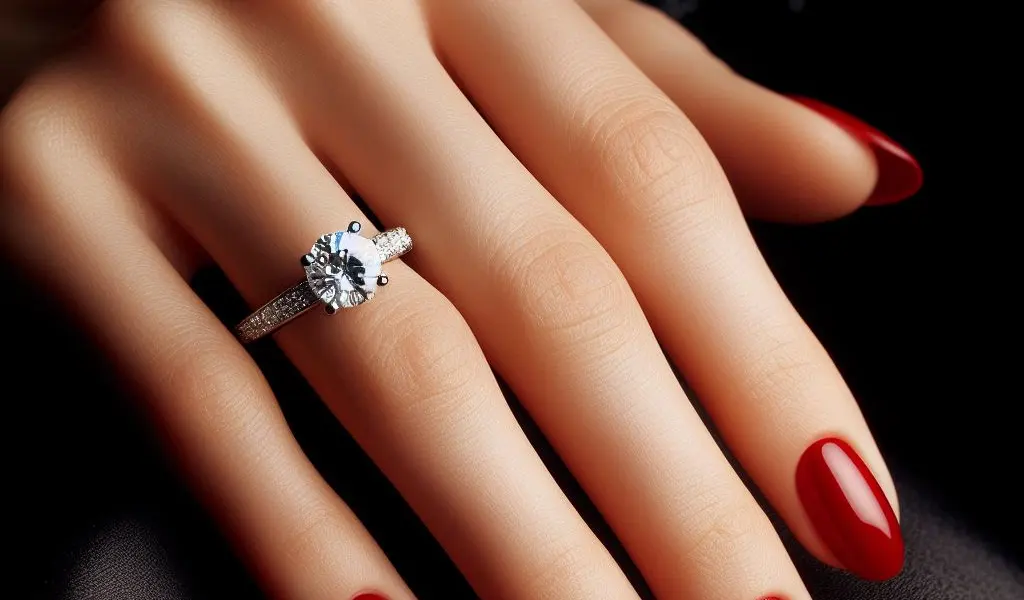
In the realm of jewelry, “CT” stands for carat, a unit of measurement used to express the weight of gemstones and pearls. One carat is precisely equivalent to 200 milligrams or 0.2 grams. This metric is fundamental in assessing a gemstone’s size and, by extension, its overall value and appeal.
The carat system allows for a standardized comparison across various types of gemstones, regardless of their shape, cut, or type.
Whether you’re examining diamonds, sapphires, rubies, or any other precious stones, the CT designation serves as a critical indicator of the gem’s weight, playing a significant role in determining its market price and desirability.
Understanding this unit of measure is essential for anyone looking to purchase jewelry, as it directly influences both the aesthetic qualities of a piece and its financial investment.
The Historical Origins of the Carat Measurement
The story of the carat begins in the ancient markets and trade routes, where a reliable and consistent method of weighing precious items was essential for commerce. The use of carob seeds as a unit of weight emerged from their natural uniformity in size, making them an ideal standard for merchants and jewelers across the Mediterranean.
This practice traces back to times when the weight of a gemstone could determine its worth, and the need for accuracy in trade was paramount. As this method of measurement spread, the term “carat” was adopted from the Greek word “keration,” referring to the carob seed itself.
This historical reliance on nature for measurement standards illustrates the ingenuity of early traders in creating a system that would stand the test of time. With the evolution of trade and the advancement of technology, the carat was eventually standardized to its current definition of 200 milligrams.
This shift from a natural seed to a precise metric reflects the progression of jewelry valuation from an art to a science, ensuring a universal understanding of gemstone weight that spans cultures and continents.
The adoption of this system by the global jewelry industry underscores the carat’s significance in connecting the past with the present, maintaining a tradition that is rooted in the ancient world.
Why Carat Weight Matters in Jewelry Selection
In the intricate dance of selecting the right piece of jewelry, the carat weight of a gemstone plays a pivotal role. This measure not only hints at the potential rarity and desirability of a gemstone but also deeply influences its market price.
Gemstones of larger sizes are not as commonly found as their smaller counterparts, making them more sought after and, consequently, more expensive. This direct correlation between carat weight and price highlights the premium placed on size in the gemstone market.
Beyond the economic aspects, the carat weight significantly affects the aesthetic and practical considerations of jewelry. Larger gemstones can offer a more dramatic and bold statement, appealing to those looking to make an impactful visual impression.
However, it’s essential to balance this desire for size with the consideration of other quality factors such as clarity, color, and cut. These elements collectively determine the gemstone’s overall appeal and suitability for a specific piece of jewelry.
Furthermore, the carat weight informs the design process. Jewelers must carefully consider how a gemstone’s weight and dimensions will integrate with the intended design, ensuring that the piece remains both visually appealing and structurally sound.
This delicate balance between size, style, and quality underscores the critical nature of carat weight in jewelry selection, guiding both designers and buyers toward decisions that align with aesthetic preferences and practical considerations.
The Difference Between Carat and Karat in Jewelry Terms
Navigating the nuanced language of jewelry requires an understanding of two key terms that, while sounding identical, hold different meanings for connoisseurs and collectors alike: carat and karat. The distinction between these terms is crucial when assessing the value and composition of jewelry pieces.
Carat, designated as “CT” and discussed in the context of gemstones, is a measure of weight. Precisely, one carat equates to 200 milligrams. This measurement is pivotal when gauging the size and, subsequently, the potential value of gemstones such as diamonds, sapphires, or rubies.
On the other side of the spectrum is karat, denoted as “K” or “kt,” which assesses the purity of gold. Pure gold is soft and impractical for daily wear, so it is often alloyed with other metals to enhance its strength and durability.
The karat system divides pure gold into 24 parts; for instance, 18-karat gold signifies that 18 parts are gold and the remaining 6 are made up of other metals. This blend determines the gold’s strength, color, and value.
Understanding the significant difference between carat and karat is essential for anyone delving into the world of jewelry, enabling a deeper appreciation of the craftsmanship and material value inherent in each piece.
How Carat Weight Influences Jewelry Design and Style
The influence of carat weight on jewelry design and style cannot be overstated. Designers meticulously evaluate the weight, size, and shape of gemstones to ensure their creations not only captivate but maintain aesthetic harmony.
For high-carat gemstones, their significant presence often commands a design centered around showcasing their majesty and brilliance. These stones become focal points, dictating the layout and craftsmanship of the piece to complement their splendor without overshadowing it.
Conversely, when working with smaller gemstones, designers employ innovative techniques to amplify their collective impact. By strategically grouping these stones, they can simulate the visual appeal of a larger, singular gemstone. This approach provides a versatile design palette, allowing for intricate patterns and detailed craftsmanship that caters to varied tastes and budgets.
Additionally, the interplay of carat weight with other design elements, such as metal type and additional gemstone accents, further exemplifies its influence. Designers must consider how the gemstone’s weight interacts with the overall composition, ensuring the piece remains both visually stunning and functionally wearable.
This careful consideration ensures that regardless of carat weight, each piece of jewelry achieves a balance of elegance and durability, tailored to the wearer’s lifestyle and preferences.
Navigating the Market: Tips for Buying High-Carat Jewelry
Venturing into the realm of high-carat jewelry requires a blend of knowledge and insight to ensure a wise investment. To begin, familiarizing yourself with the 4 Cs—carat, cut, color, and clarity—is paramount.
This foundational knowledge equips you to understand the nuanced aspects that contribute to a gemstone’s value, allowing you to discern quality pieces from the vast offerings in the market.
Opting to purchase from reputable jewelers who can provide detailed certification for their gemstones is another critical step. These certifications authenticate the gemstone’s characteristics and origin, offering peace of mind about your investment.
Furthermore, it’s important to contemplate the practical aspects of owning high-carat jewelry. Larger gemstones, while stunning, demand attentive care and might not be suited for everyday wear. Assess how the jewelry fits into your lifestyle and the care it requires to maintain its luster over time.
Additionally, while the allure of high-carat gemstones is undeniable, your personal connection to the piece—how it makes you feel when you wear it—should not be overlooked. After all, the true value of jewelry transcends its price tag, encompassing the joy and the memories it brings.
As you navigate the market, keep these considerations at the forefront of your decision-making process, guiding you toward pieces that not only represent a sound financial investment but also hold personal significance and enduring appeal.
The Future of Carat Measurement in Jewelry
As we navigate through an era of unprecedented technological advancements, the methodology behind carat measurement in jewelry is poised for transformation. Innovations in digital imaging and scanning technologies are already making strides in the way gemstones are evaluated and categorized, promising a future where the precision and reliability of carat measurement reach new heights.
Emerging tools, such as high-resolution 3D scanners, are equipped to analyze a gemstone’s dimensions and weight with astonishing accuracy, allowing for a more nuanced understanding of its true value.
Additionally, blockchain technology is beginning to play a role in the traceability of gemstones, including details about their carat weight, source, and journey through the supply chain. This increased transparency is likely to enhance consumer confidence and streamline the purchasing process.
As we look forward to these developments, it’s clear that the integration of technology will not only refine the accuracy of carat measurement but also enrich the overall experience for both jewelers and buyers, fostering an environment of trust and appreciation for the artistry behind every piece.
FAQs
1. Can the same carat weight look different on different gemstones?
Yes, due to variations in gemstone density and cut, two stones of identical carat weight may appear different in size. A diamond and a sapphire of the same carat weight, for example, might not look the same size due to differences in their shape and how they are cut.
2. Does a higher carat weight always mean a more expensive gemstone?
While carat weight is a significant factor in determining a gemstone’s value, it’s not the only aspect. Clarity, color, and cut also play crucial roles in a gemstone’s overall price. A smaller gemstone of exceptional quality may command a higher price than a larger gemstone of lower quality.
3. How can I ensure I’m getting a fair deal on a high-carat gemstone?
Always purchase from reputable jewelers and request a certification for the gemstone, which should include details about its carat weight, color, clarity, and cut. This certification helps verify the stone’s authenticity and quality.
4. Is carat weight related to the size of the jewelry piece itself?
Carat weight specifically refers to the weight of the gemstone and not the overall size or weight of the entire jewelry piece. The design and metal used in the piece can influence its size and weight independently of the gemstone’s carat.
Conclusion: Embracing Carat as a Key Aspect of Fine Jewelry
Grasping the concept of carat weight is more than just a step towards becoming an informed jewelry enthusiast; it’s about unlocking a deeper connection to the art and science of jewelry selection.
This critical measure shapes the essence of a gemstone, influencing its aesthetic appeal, market worth, and the narratives we attach to our cherished pieces.
As you venture into the intricate world of fine jewelry, the knowledge of carat weight equips you with the insight to discern quality, appreciate craftsmanship, and understand the rarity of the gems you choose to adorn.
It empowers you to select pieces that not only captivate the eye but also hold profound personal value and stand the test of time. Engaging with carat weight doesn’t merely inform your purchasing decisions—it enriches the story of each piece in your collection, intertwining with your personal journey.
In essence, embracing carat as a pivotal aspect of fine jewelry enhances your appreciation for every facet of these remarkable creations, from their geological origins to their artistic manifestations, culminating in a collection that truly resonates with your spirit and style.

